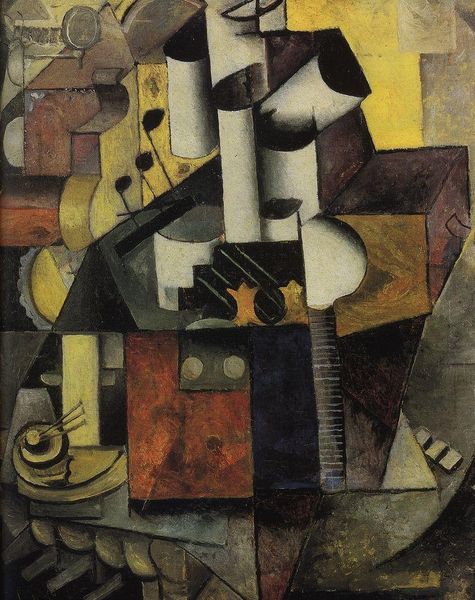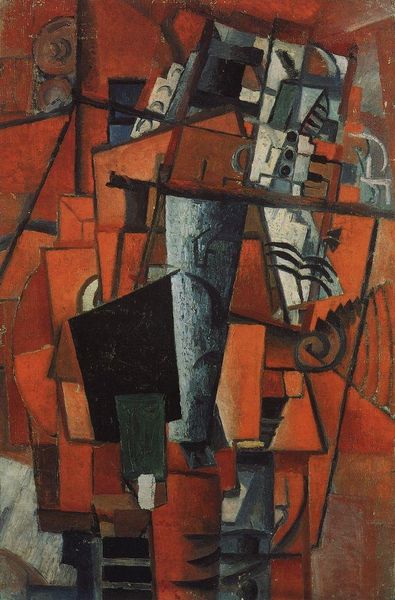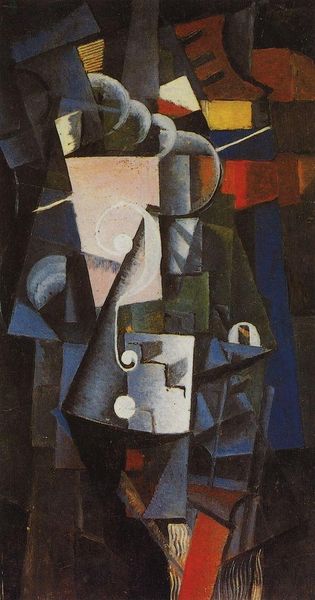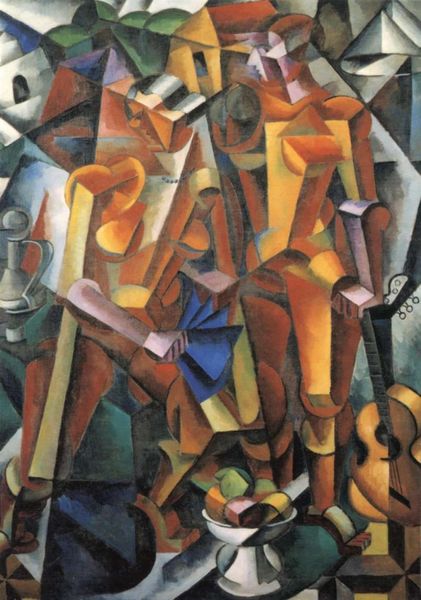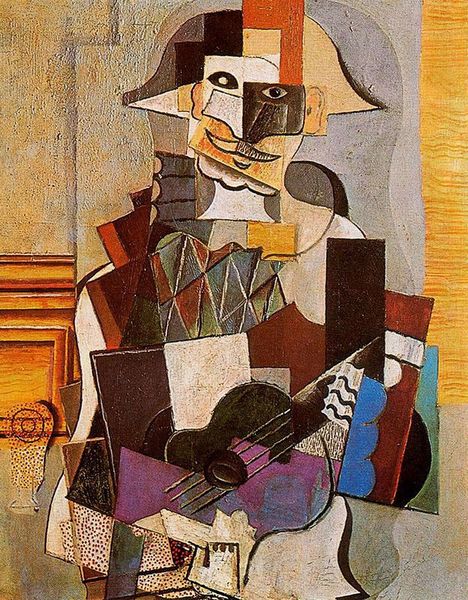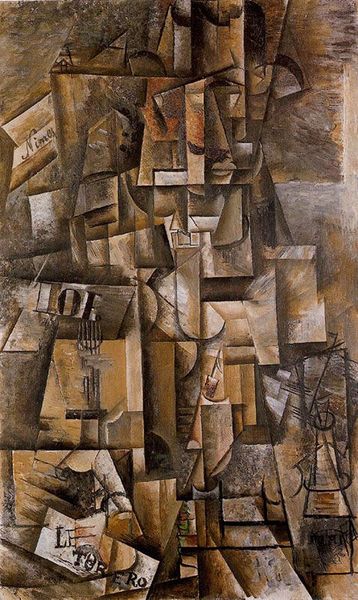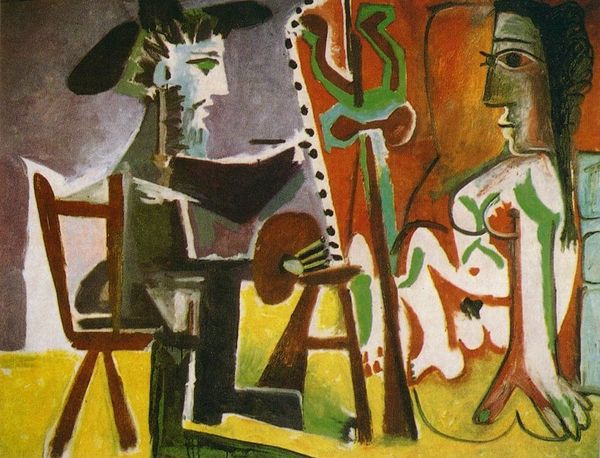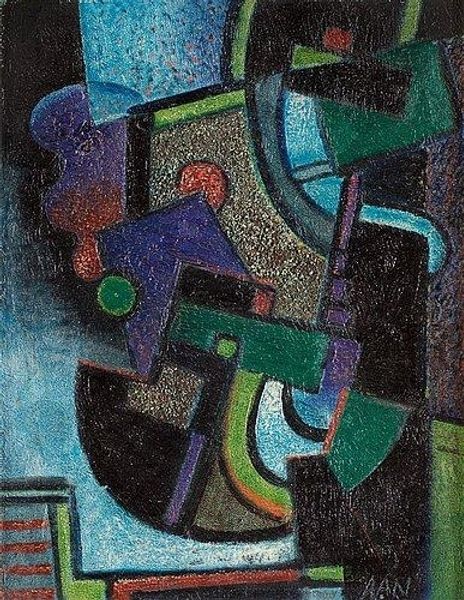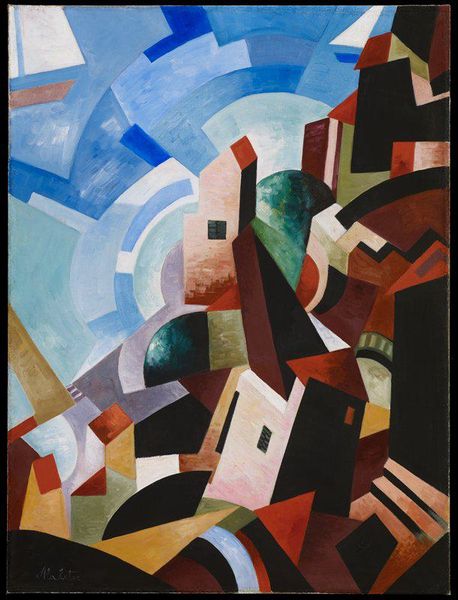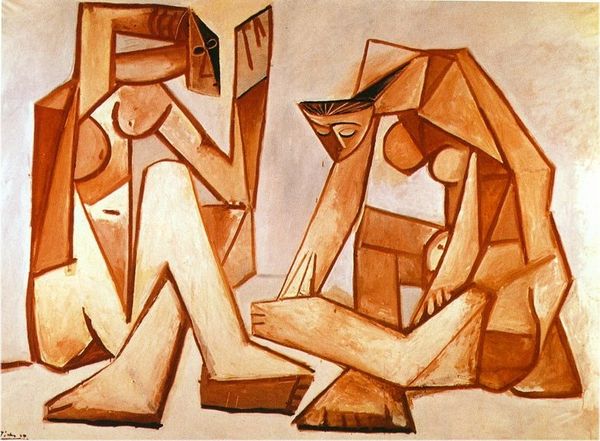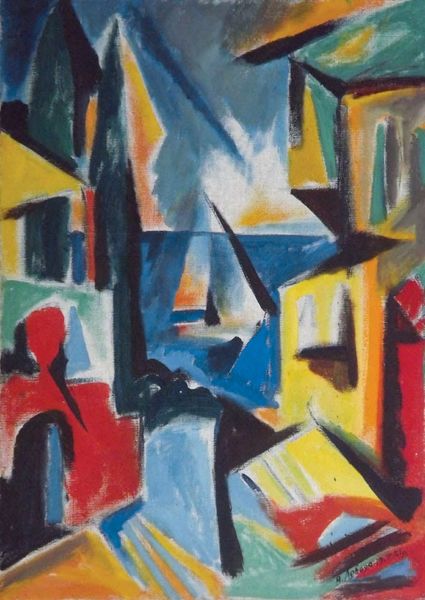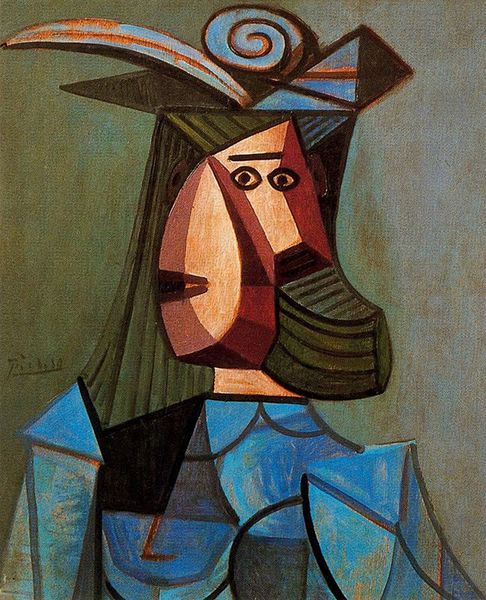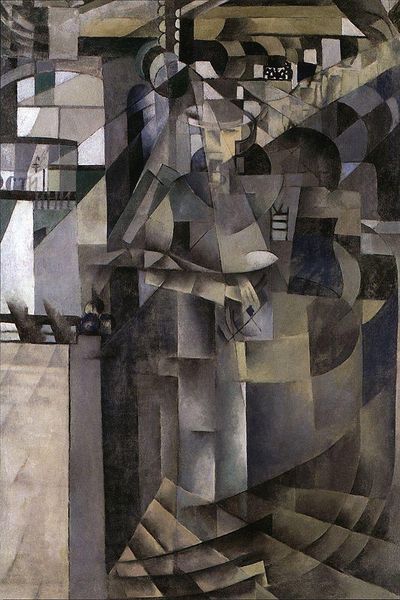
painting
#
cubism
#
painting
#
figuration
#
geometric
#
cityscape
#
bauhaus
#
modernism
Copyright: Public domain US
Curator: Sandor Bortnyik's "The Lamp Lighter," created in 1921, immediately brings to mind the artistic ferment surrounding the Bauhaus movement. What strikes you initially? Editor: There's a monumental stillness here, wouldn't you agree? The angular forms give a sense of stability, a deliberate almost block-like construction of form and space. And is that moonlight, echoing the lamp? It’s creating a symbolic doubling of illumination. Curator: It does. Bortnyik's work, deeply entwined with socialist ideals, often tackles the themes of urban labor and the "new man" emerging from societal change. The Lamp Lighter becomes a figure of not just labor, but enlightenment in the dawning modern age. His positioning, literally and figuratively overseeing the architectural cityscapes beneath him, seems charged. Editor: I see it, and I can’t help but consider that very controlled palette. It is constrained to browns and blues—it almost evokes a faded photograph or an artifact uncovered to symbolize lost knowledge. The lamp itself becomes more than just a source of light. Curator: It is! Think of it: The geometric cityscape is characteristic of cubist and constructivist influences, common across early Bauhaus artists like Bortnyik. The figure himself feels like a statement about the working class’s crucial, foundational presence in constructing and guiding the evolving urban environment. We're meant to consider this image, particularly how it represents marginalized labor, with both critical and admiring eyes. Editor: Yes, even in this flattened perspective, the geometry of the lamp, its rhomboid shape, strikes a unique balance in an urban setting where circles might seem to have less of a function or relevance, and this figure looms as both guide and symbol. He bears this new geometric burden, not unlike Atlas. Curator: Looking closely, even his own form takes on that architectural blockiness. His almost stoic features highlight, in my reading, a theme central to modern art—finding humanity and individuality amid urban landscapes designed around industry. This gives me plenty to reflect on. Editor: And I walk away with a sense of visual economy, of how symbolism doesn’t need to shout, but simply stand solid, like a lamp-lighter at twilight.
Comments
No comments
Be the first to comment and join the conversation on the ultimate creative platform.
